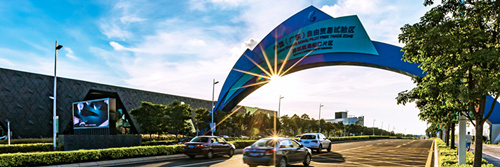
. > WHAT'S NEW > REPORTS
Blue book of FTZs released
Author : WU YONG Source : Chinese Social Sciences Today 2017-06-05

The Qianhai and Shekou Area of the Guangdong Pilot Free Trade Zone, having made great strides in financial innovation and business environment, ranks second, only surpassed by the Shanghai Pilot Free Trade Zone, according to a blue book recently released by Sun Yat-Sen University.
A blue book released by the Institute of Free Trade Zones at Sun Yat-Sen University on May 17 indicates considerable improvement in the reform of China’s pilot free trade zones.
According to the Blue Book of China Pilot Free Trade Zones (2016-2017) released by the institute, pilot free trade zones in China have made remarkable achievements in institutional innovation in the past three years. These innovations include an investment management system with a “negative list” administrative model at the core, a trade supervision system focused on trade facilitation, a substantial financial system that serves the real economy and a government management system compatible with the open market economy.
Lin Jiang, vice-director of the institute, said the research team conducted a comprehensive evaluation of eight of the pilot free trade zones in China utilizing the “institutional innovation index.”
Five first-grade indices were established using the metrics of investment facilitation, trade facilitation, financial innovation, transformation of government function and the effectiveness of rule of law as well as 19 second-grade indices and 59 third-grade indices.
It is noteworthy that the Qianhai and Shekou Area of the Guangdong Pilot Free Trade Zone, with its great advances in financial innovation and business environment, ranked second. The Shanghai Pilot Free Trade Zone only surpassed it by a narrow margin. Meanwhile, the internal gaps among the eight zones are shrinking while the spillover effects are growing.
The next goal of China’s pilot free trade zones, according to the blue book, is to expedite an open, innovative financial system for the RMB cross-border use and capital account convertibility.
For more enterprises to participate in the “Belt and Road” initiative, the pilot free trade zones could further explore the taxation system that encourages overseas equity investment and offshore transaction. At the same time, the zones’ connection with the “Belt and road” initiative, with the integrated development of the Beijing-Tianjin-Hebei region and with the Guangdong-Hong Kong-Macao Greater Bay Area should be strengthened.
WU YONG is a reporter at the Chinese Social Sciences Today.
Ye Shengtao made Chinese fairy tales from a wilderness
Ye Shengtao (1894–1988) created the first collection of fairy tales in the history of Chinese children’s literature...
-
How northern ethnicities integrated into Chinese nation
2023-09-18
-
Mogao caves
2023-09-12
-
Mogao Grottoes as ‘a place of pilgrimage’
2023-09-12
-
Time-honored architectural traditions in China
2023-08-29
-
Disentangling the civilizational evolution of China
2023-08-28
-
AI ethics in science fiction
2023-08-23













 2011-2013 by www.cssn.cn. All Rights Reserved
2011-2013 by www.cssn.cn. All Rights Reserved